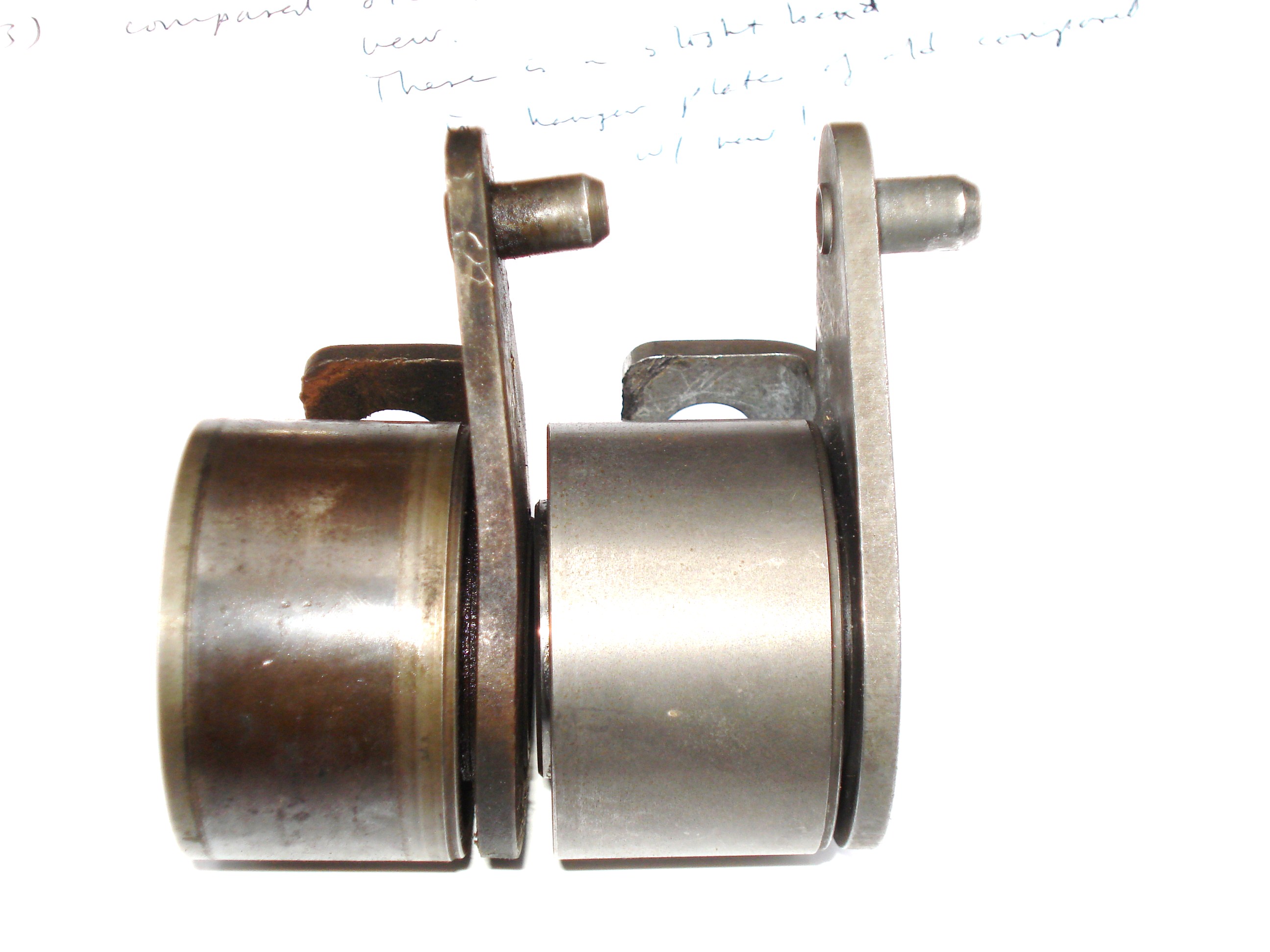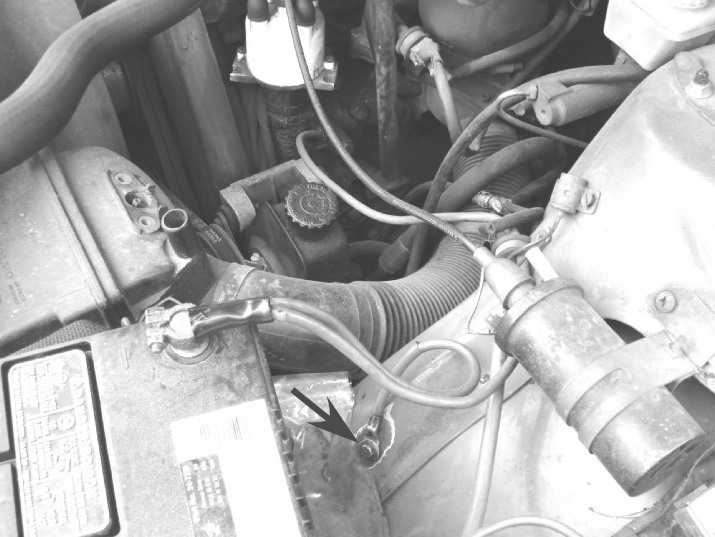 |
Oops, it seems I was wrong. A professional
mechanic said the back of the hanger plate is supposed to be
flat. "Something is out of alignment," he said. I gave
up in defeat and installed the old roller. My guess is
that one of the camshafts is not aligned with the crankshaft
and other camshaft, but I have not verified this opinion.
Changing the timing belt on my 1987 740 turbo, B230FT engine
I spent one week trying to figure out
this problem. After installing the new belt, one should rotate
the crankshaft twice (720 degrees clockwise, as seen by an observer
in front of engine, looking toward back---I was a physicist once,
you know) to see whether the belt slips. When I did so, the belt
was indeed slipping forward off the tensioner roller and
the overhead camshaft gear. I went through various possibilities,
including: (a) removing washer from in back of overhead camshaft
gear, (b) pulling crankshaft gear off and checking that shims
and pulley boss were pushed up tight against face of crankshaft,
(c) using different timing belts, (d) checking to see that all
pulley gears were aligned, (e) replacing new tensioner spring
with old one. Scratch my head. Went online to get help from Tech
at www.volvoforums.com.
Almost bought new camshaft gears, thinking that the teeth might
have become too worn to hold the belt in place. Another option
was to put another 2-mm washer in back of the overhead camshaft
to push the gear forward more.
Think! Think! Think!
Finally, what did I replace? I replaced the tensioner roller
and timing belt. Then, let's check the new tensioner roller (right,
in photo) against the old (left, in photo). When I did, I discovered
that the old INA tensioner had a slight bend on the back hanging
plate while the new INA tensioner did not. I then installed the
old tensioner with the new timing belt and rotated the crankshaft
2X. Problem solved! Belt did not slip off roller or overhead
camshaft.
Lesson learned: If installation of
a new part goes awry, check that part against the old one. |
